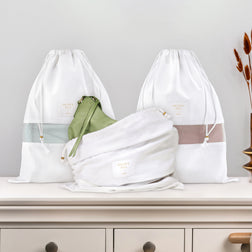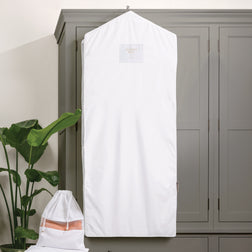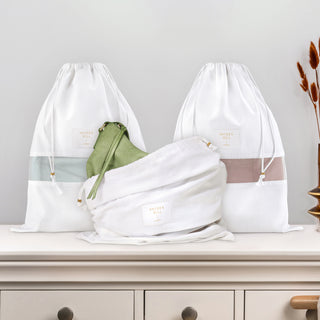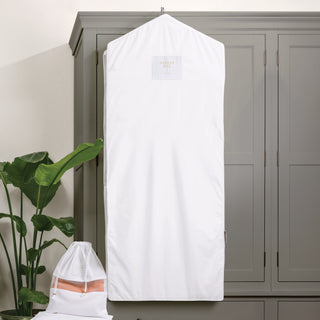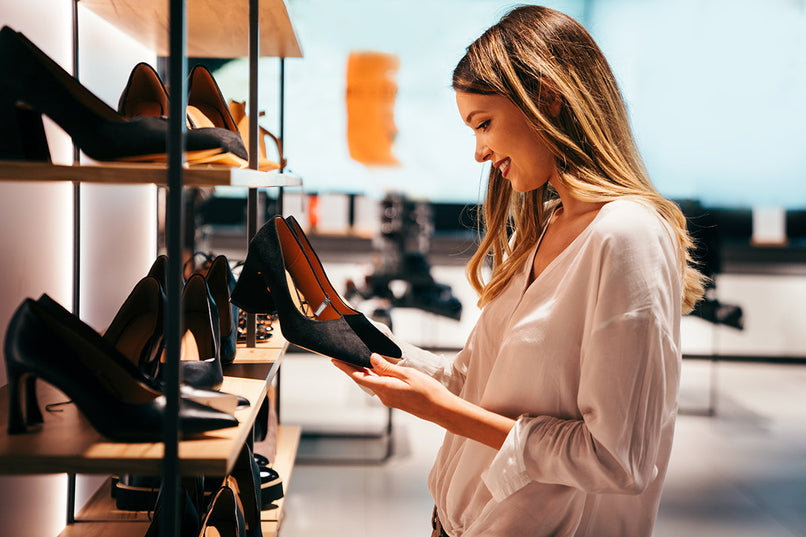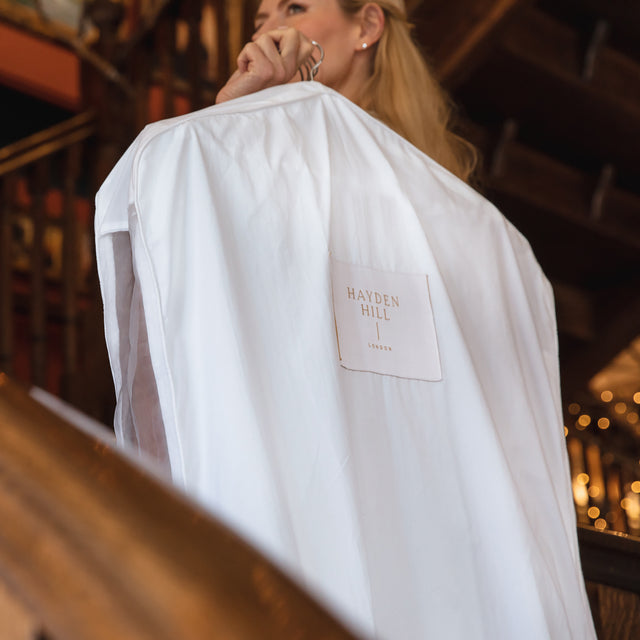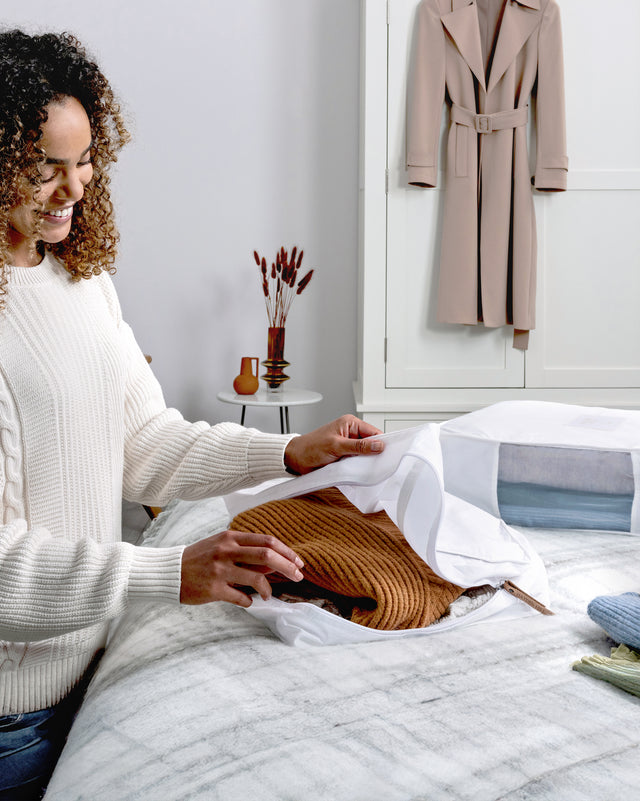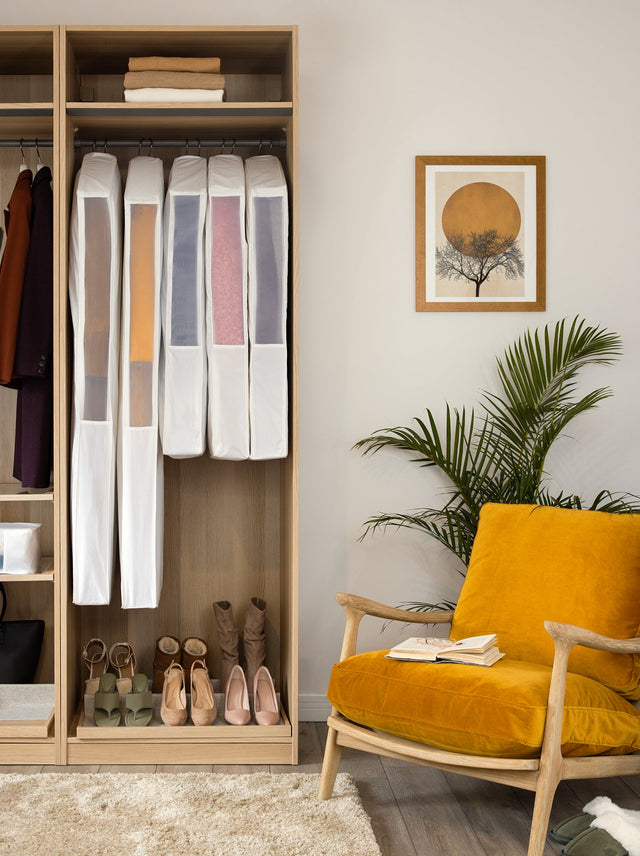Wearing the correct shoe size is essential for foot comfort. Women often force their feet into ill-fitting footwear, either because they like the look of the shoe, or because they are unaware that their shoe size changes over time due to gravity and pressure, age, weight gain, and other factors.
Any woman who has spent hours wearing beautiful but uncomfortable shoes to a formal event knows the importance of finding high-quality and properly sized shoes.
Wearing the correct shoe size is essential for foot comfort. Women often force their feet into ill-fitting footwear, either because they like the look of the shoe, or because they are unaware that their shoe size changes over time due to gravity and pressure, age, weight gain, and other factors.
Advising you how to find your correct shoe size might sound like a no-brainer, but many people unknowingly wear the wrong size and width.
Why is shoe size important?
Actress and singer Bette Midler famously said, "Give a girl the right shoes and she can conquer the world."
The question is, how do you know when you’ve found the right shoes?
Wearing shoes that are too tight or too loose is uncomfortable and can lead to foot pain and foot disorders. And, continued wear of incorrectly sized shoes can cause toe deformities, corns, and calluses.
Ew, right?
Our feet change as we age, which can result in minor changes in foot length and width. So it's important to periodically measure your feet, especially if your most comfortable shoes are starting to feel uncomfortable.
Knowing your correct size will also prevent purchasing shoes that don’t fit correctly, which is especially important now that we buy the majority of items online.
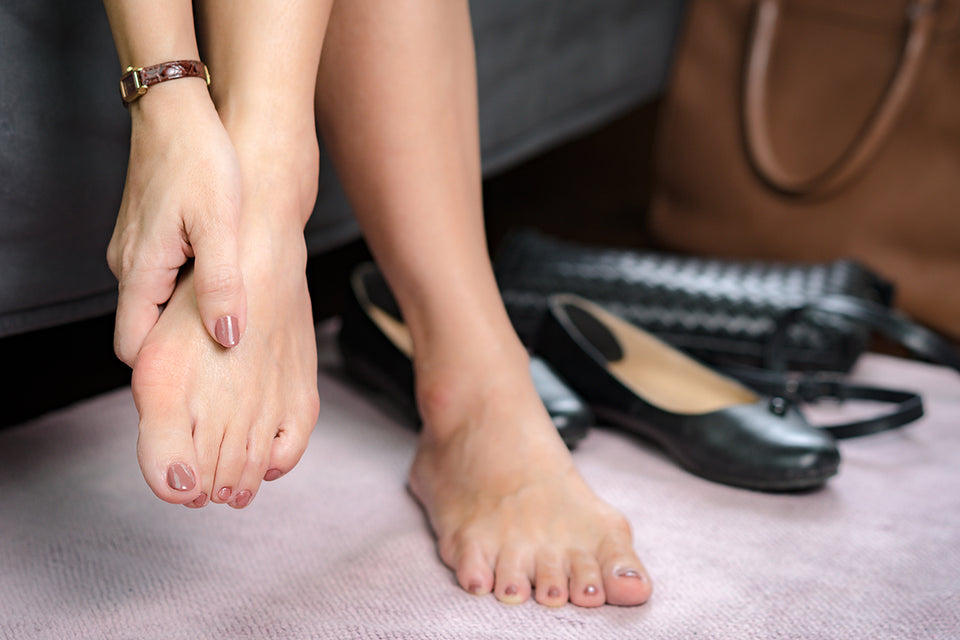
How to Measure Your Shoe Size at Home
There are a couple of different methods you can use to measure your shoe size at home.
Trace Your Feet on a Piece of Paper
Place a piece of paper out on a flat, hard-surface floor. If necessary, you can tape down the paper to prevent it from moving.
Either standing or sitting, place your foot firmly on the piece of paper and draw a line all the way around your foot with a pen. To ensure that your lines stay on the outside of your foot without angling in beneath your toes, make sure the pen is pointed directly down. Repeat with your other foot to complete the process.
Mark the widest and longest points on each side of your outlines. This will be the outer tip of your longest toe, the outermost point of the back of your heel, and the widest part of your forefoot.
Using a ruler or measuring tape, measure both feet's longest and widest parts. The length is measured from the point on the outside of your longest toe all the way down to the outside of your heel. Your foot’s width is measured at the broadest part of your forefoot. To ensure the numbers are accurate, take several measurements.
Due to the fact that a shoe size chart can be listed in different units, you might also wish to measure in both inches and centimeters.
Measuring Your Feet with a Measuring Tape
When using a measuring tape to determine the size of your feet, instead of starting at 0, start measuring its length at 1 centimeter (0.39 inches).
This method of measurement is simpler than lining up your heel with the end of the measuring tape. Get your estimates and subtract 1. Use a conversion table to find your correct size.
Use a Brannock Device
With a 96% accuracy rate, the best tool for measuring your feet is the Brannock device, which Charles Brannock patented in 1927. Although it is typically only found in shoe stores and clinics, you can still get your own device and measure at home. The Brannock Device assists you in determining three distinct measurements, including your heel-to-longest toe length, your heel-to-ball length, and your foot width.
Press your toes firmly against the Brannock device and look down over your longest toe to measure the distance from the heel to the longest toe (which may or may not be your big toe). This number is your heel-to-toe length.
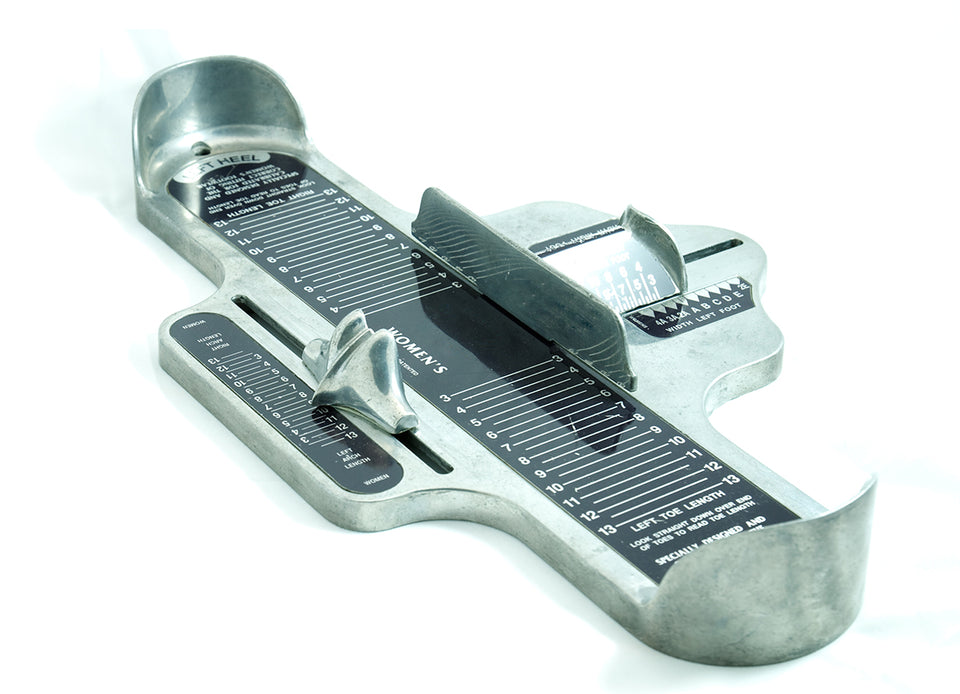
To measure heel-to-ball length or arch length, you should adjust the tiny pointer on the device's side forward until the inner curve lines up with the ball joint of your foot. The lower middle rib should be directed against the ball joint on the side of your foot for the pointer to be in the correct position. Next, contrast the heel-to-ball and toe-to-heel lengths. Typically, the larger of the two represents the proper shoe size.
Once you know your size, slide the width bar of the device firmly to the edge of your foot. View the width measurement that goes with your shoe size by finding it on the bar.
It is important to use the Brannock Device to measure both feet because it is common for each foot to be slightly different. If the size differs, choose the larger size.
Measurement Tips
There are a few tips that will ensure that you get a more precise measurement of your feet.
- Measure your feet at the end of the day when they are the largest.
- Measure your shoe size while wearing the socks or tights that will go with the shoes.
- Only measure your feet while barefoot if you intend to wear the shoes barefoot. ie. if you are buying sandals.
- Measure both feet and fit your shoes based on the larger foot.
- If you are doing the measurement by yourself, you will obtain a more accurate measurement if you sit in a chair when measuring.
- If you have someone to assist you, standing is the best option when taking foot measurements.
- When outlining your foot, be careful not to wobble the pencil so that it adds or subtracts from the size of your foot. The increments between shoe sizes are very small, so accuracy is key. Also, don't round up or down. Simply take an exact measurement and use it to determine your shoe size.
- You can measure in inches or centimeters. If you already have a certain brand or specific shoe in mind, look at its conversion table to see which unit they prefer.
How to Find Your Shoe Size
After measuring your feet, it's time to determine your shoe size. To determine your size, each shoe brand usually has its own foot size charts. Simply find the length of your foot on their table chart and then find your shoe size.
Finding Your Athletic Shoe Fit
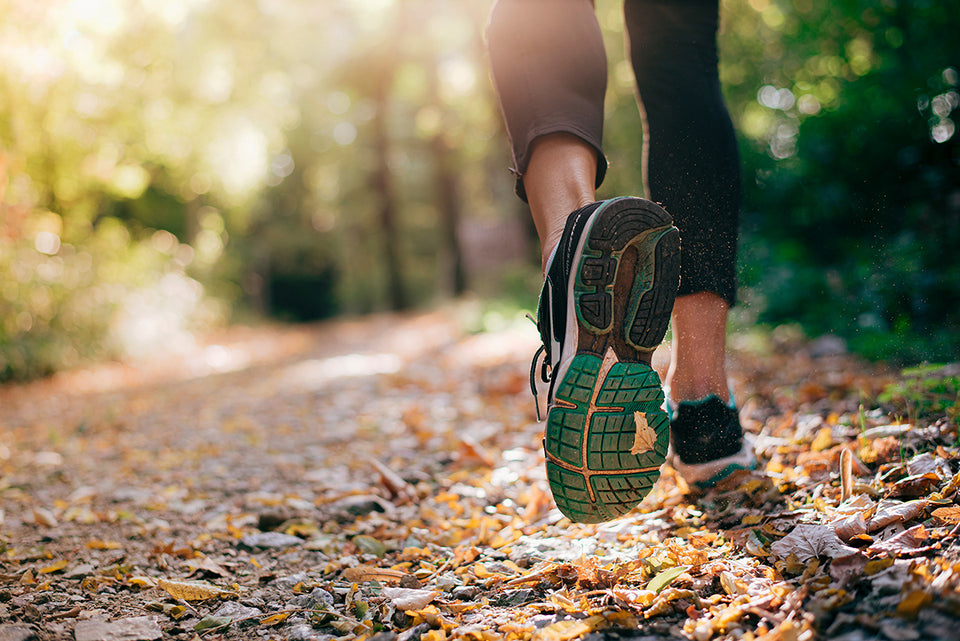
Since different types of shoes serve different functions, they may require a different fit. Because feet swell when you exercise, when purchasing athletic shoes like walking shoes or hiking boots, consider going up a half-size or even a full-size.
How Should Walking Shoes Fit?
Walking shoes should have extra space in the toe area. If these shoes fit too snugly, they can restrict the muscles in your foot. When shopping for walking shoes, look for ones that have a thumb's width between your longest toe and the front of the shoe.
How Should Running Shoes Fit?
Running shoes should fit across the foot with some room in the toe area. At the front of your running shoe, there should be half a thumb's width of space. In running shoes, your heels should be locked in place. A snug fit around your heel and midfoot is essential.
How Should Hiking Shoes Fit?
Hiking shoes should be snug but not painfully tight. In hiking shoes, your foot should feel locked in place and secure. However, make sure you can comfortably wiggle your toes. There should be space in your toe box because your toes will slide downward when walking downhill. Hiking shoes should also not be too wide because you do not want your heels to move in the shoe.
Breaking in New Shoes

Even when your shoes are the correct size, a new pair of shoes may still require some breaking in. These three tips will help you break in your shoes and have them ready to wear as long as you’d like.
Break in Shoes Gradually
If you're going to wear your shoes to a big event or for a long period of time, gradually break them in. Wear them around the house until you can wear them comfortably for hours.
Tie Your Laces Tightly
If your shoes have laces, it's tempting to wear them a little looser while breaking them in, but tying them tightly will help to speed up the process.
Wear Thicker Socks
If you think a particular pair of new shoes may create blisters, wear thick socks while breaking them in. The socks will protect sensitive areas while the shoes loosen up.
FAQs
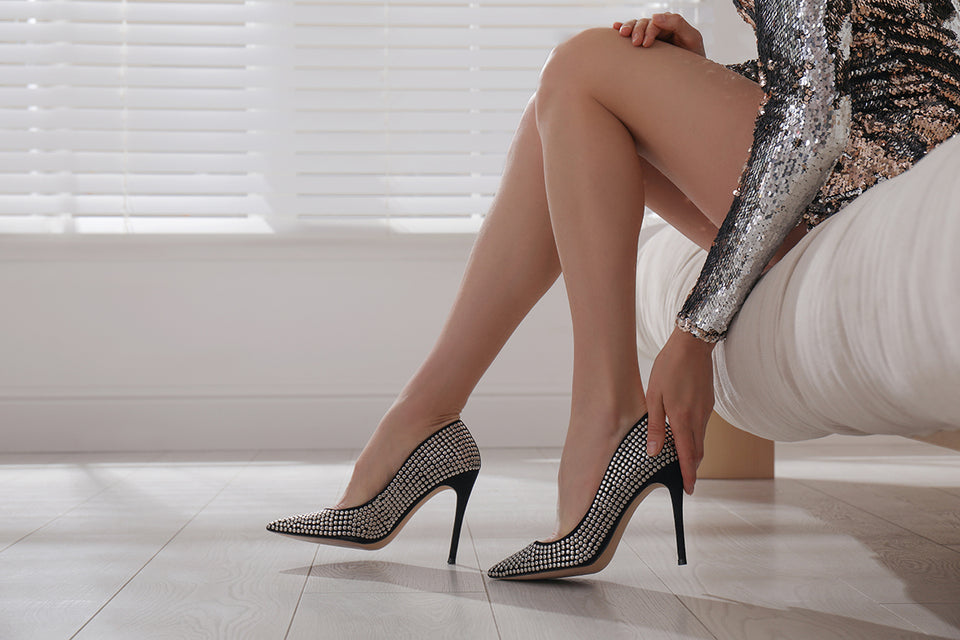
How can I measure my shoe size at home?
There are a couple of methods you can use to determine your shoe size at home. The simplest way is by tracing your foot on a piece of paper. Two other methods include using a measuring tape or a Brannock device.
How do I calculate my shoe size?
If you already have a specific shoe brand or style in mind, look at the brand’s shoe size conversion table to find whether they list measurements in inches or centimeters. Then measure your feet using one of the methods above and compare your measurements to the chart. Different brands have different shoe charts, and your shoe size can vary depending on the brand of shoes.
Just as selecting the right shoe size is critically important, so is shoe care. Shoes, like clothing, have a longer life when cared for properly and stored in dust bags or shoe bags, especially if they are not being worn often.
Clothing should be stored in high-quality cotton garment bags. Hayden Hill bags are made of 100% organic, soft cotton that is environmentally friendly and allows your favorite pieces to breathe while keeping them protected from damage. We deliver sustainable and beautiful large storage bags to preserve and protect the clothes you love most.
